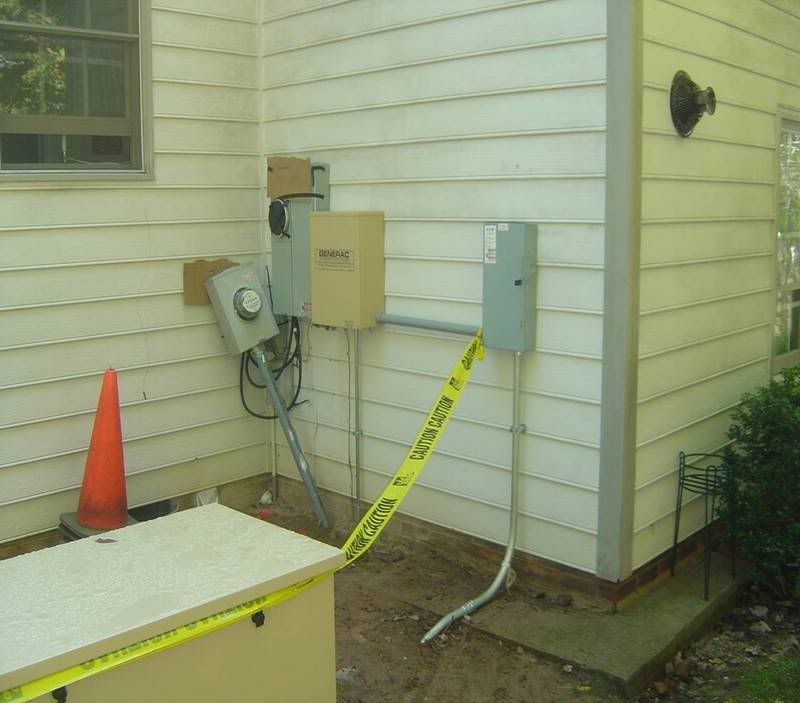georgestolz said:
I just do not understand this service-rated stuff.


Allow me.
When a 'standard' whole-house automatic transfer switch (ATS) is installed, it is wired between the meter and the service panel, and switches the entire normal service current (which is why it must be sized for the service and not just the generator.)
Unless you happened to already have a main disconnect at, or adjacent to, the meter, and wire the ATS after this main disconnect, the ATS will be ahead of the panel's main breaker, which is (or was) the main disconnect. You now have equipment that cannot be disconnected from the utility.
To get around this, you either must install a new main disconnect between the meter and the ATS, or use a 'service-rated' ATS, which merely indicates that the ATS contains its own built-in disconnect, typically a circuit breaker.
Every service-rated ATS I've seen contains both a utility disconnect and a generator disconnect, each wired between the input terminals and the actual transfer switch itself. This way, the ATS can be isolated from the two supplies, in compliance with the requirements for service disconnects.
In other words, if the only way to de-energize an ATS is to pull the utility meter, you do not have a compliant installation. This installation required the new meter-main (or a stand-alone main disconnect), as well as the wall-mounted generator disconnect, because the ATS is not the service-rated type:
Meanwhile, a service-rated ATS could have been used, which would have allowed the original meter to remain, and neither added disconnect would have been required. In my opinion, using the service-rated ATS more than pays for itself in material and labor savings.




